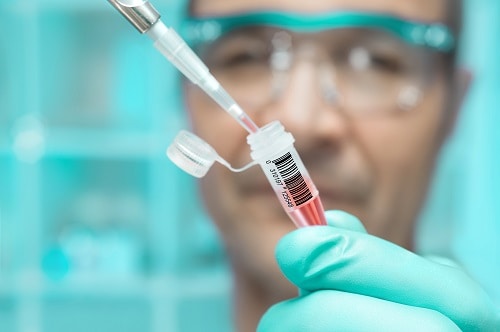
The pharmaceutical research and development challenge
pharmafile | June 30, 2017 | News story | Business Services, Manufacturing and Production, Medical Communications, Research and Development, Sales and Marketing | R&D, pharmafile
This report from Kalorama Information was featured in the Spring 2017 edition of Pharmafile.
Despite new approaches, new technologies and a wealth of new information, drug R&D is still challenged by understanding exactly how drugs will work and why they may fail. In order to overcome this, many large pharmaceutical entities have turned to smaller drug discovery firms.
The biotech industry is generally thought of as the leading source for innovative drug products. New biologic drug approvals have been climbing for the past 10 years and have been making up a larger portion of all drugs approved. Some of the major mergers and acquisitions in the last year have been from transitioning pharmaceutical companies that want to take advantage of leading biopharma businesses. For example, Pfizer acquired Wyeth in October 2009. The acquisition was part of Pfizer’s shift towards a broader, more competitive biopharma company. Pfizer continues to develop small molecules but sees the potential in significantly increasing its stake in biologics.
Another issue that companies may have to deal with over the next several years is whether there is going to be more emphasis on cost effectiveness or value added to a new drug. Are drugs that are really innovative going to have the advantage over just the follow-on products? Many companies are exploring that and trying to understand how much emphasis is going to be put on that as new drugs go through the FDA and then look for reimbursement approval.
The drug approval process
Pharmaceutical products are tested before they reach the market in many clinical trials and studies. The process is used to test and confirm the safety and efficacy of medicines for humans to use throughout a course of treatment. The testing process begins with preclinical laboratory or animal tests. If a product moves from the preclinical phase, controlled clinical testing is used to test a product on human volunteers. The testing process has five basic stages in addition to gaining market approvals:
• Preclinical (laboratory testing)
• Clinical Phase 1 (initial human testing, focuses on safety)
• Clinical Phase 2 (tests for effectiveness and safety)
• Clinical Phase 3 (focus is on more complete testing in safety and effectiveness)
• Registration (marketing approval)
• Phase 4 (post-marketing studies)
A new drug, often called an investigational new drug, is tested in Phase 1 trials to determine tolerability. Doses are minimal in this phase but doses can be increased to study how the body processes the drug. The terms often used for body/drug interaction are “pharmacokinetics” and “pharmacodynamics”. Pharmacodynamics focuses on how a drug affects the body. Pharmacokinetics focuses on how the body processes the drug. This phase tests a product more often on healthy volunteers. Phase 2 testing moves towards testing the product against a specific disease or condition. More accurate dosages and the best routes of administration are determined. Additionally, data concerning a product’s safety and possible risks are collected. A larger trial group (compared to Phase 2) is used in Phase II. Often several hundred-trial patients are studied in Phase 3.
Phase 3 testing is completed on the largest number of people. The data from previous tests is used to continue the study of Phase 3 products, as well as additional data collection for safety and efficacy. Phase 3 testing is often double-blind, meaning the patient and the caregiver do not know whether or not the trial participant is taking the active ingredient or a placebo. Some studies also test multiple therapeutic products and a placebo.
Clinical trials require a considerable amount of resources so even if a product meets early safety and efficacy criteria, a company may be unable to take a product to market because of costs. Products that show promise may be pushed through development by investors and/or interested third-party companies that see the benefits of a product.
The trial process uses volunteers that may drop out of studies if they wish to do so. Government agencies and review boards monitor the trial process and they can cancel a trial as well.
If a product is allowed to pass Phase3, it moves to the registration process. This stage allows health authorities to determine if a product is indeed safe and effective. In the U.S. this agency is the Food and Drug Administration. Marketing a new drug in the U.S. requires a New Drug Application (NDA) and in Europe, a Market Authorization Application (MAA) is filed with the European Agency for the Evaluation of Medicinal Products (EMEA). Upon receiving product approval, a manufacturer may conduct post-marketing studies, or Phase IV trials. This stage of testing provides additional data including long-term risks, and benefits. Certain accelerated product approvals require Phase IV testing.
Percent of Approvals
Drug approvals as a percent of drugs analysed are decreasing. Estimates suggest the number of approved products in traditional pharmaceutical research is approximately half of what it was 15 years ago. Researchers have reported that only about 1:10,000 chemical compounds are safe or effective enough to move through the approval process. There are several strategies currently in place working to address this issue and expand the success of compounds.
Selecting Better Targets
In 2014, the National Institutes of Health (NIH) introduced a large joint venture project comprised of itself, FDA, I 0 biopharmaceutical companies, and various non-profit organizations such as the Lupus Research Institute, and Alzheimer’s Association The goal of the project is to accelerate drug development by selecting better biological targets of disease. By working together, the companies and industry organizations hope to reduce costs and increase available therapies.
Companies are finding more disease targets using advanced research techniques, but if the therapies fail in late-stage trials, it is usually very expensive. If better disease targets are selected from the start, companies expect to develop more effective therapies and waste less in lost R&D investment.
The failure rate for new compounds decreases with phase; however this can be more costly when failures do happen. It is suggested that a Phase I compound has a 90-95% failure rate; a Phase II compound has an 80-85% failure rate while a Phase III compound has a 30% failure rate. The distribution of development costs associated with each phase is as follows:
• Phase I- 2%
• Phase II – 9%
• Phase III – 89%
Top R&D Spenders
Pharmaceutical companies spend significant resources in research and development activities. Even when comparing all industries, drug development companies are at or near the top when comparing research expenses to total revenues.
Fluctuations in revenues, expansionary policies, and pipeline projects are all important aspects of how much is spent in R&D. Companies with advanced development technologies combined with the number of projects in development can push R&D spending to billions of dollars and 15-20% of revenues each year.
For 2015, the top company in terms of revenues, Pfizer, is not at the top of list for research and development spending. Roche spent the most on R&D with almost $10 billion allocated to this expenditure for 2015. Johnson & Johnson moved up to take the second largest spender on R&D with $9 billion Rounding out the top three R&D spenders is Novartis with $8.9 billion for 2015.


The Pipeline Snapshot
Contributors to R&D success are rooted in having a pipeline with some breadth that balances stages of development and high and low-risk projects, including innovative drugs and follow-on products. Kalorama Information believes that pipeline quality can be improved by rigorously assessing product candidates against financial expectations and objectives, market analysis and input and high goals for advancing compounds.
Roche is the leading company according to R&D projects followed by Johnson & Johnson, Pfizer, Novartis and AstraZeneca. Roche, including its Genentech division, has a pipeline of products heavily focused on oncology. The driver right now is an aging population and producing lucrative long-term therapies for conditions affecting older populations. Many companies are building on their strengths in various disease areas. For example, GlaxoSmithKline’s pipeline is heavily focused on respiratory conditions and infectious disease.

Focusing on blockbuster prospects is attractive but considered high risk. If they fall through, there can be gaps in the pipeline; and if companies only advance products that have a certain level of market potential, then a number of products that may have a greater chance of survival may be killed. These are everyday decisions that product managers, R&D managers and executives struggle with to make the correct decisions to advance the pipeline and bring valuable products to market in a timely manner.
There are more projects for the treatment of cancers than any other therapeutic segment. This is not surprising due to the unmet medical need in cancer, the numerous types of cancer and complexity in treating the disease. Other major areas of therapeutic focus within the top 25 companies include neurological disorders; respiratory and inflammation; cardiovascular and blood diseases; and infections.
A significant finding and trend found in the development of this report is that many of the companies with a large number of projects are located in Japan – an area focused on innovative medical treatments.
Related Content

Evotec and Dewpoint Therapeutics enter strategic partnership
Evotec and Dewpoint Therapeutics have announced a strategic R&D collaboration for the advancement of Dewpoint’s …

BMS shares new research and development plans at the company’s R&D day
Bristol Myers Squibb (BMS) recently held a Research and Development (R&D) Day in New York, …

Pharmafile.com’s top 10 news stories of the week
COVID-19 news has slowed down in the last week, allowing different pharma developments to take …









